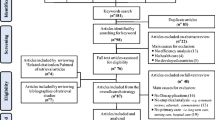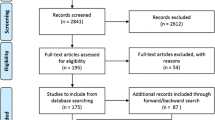Abstract
The main applications of Data Envelopment Analysis (DEA) to medicine focus on evaluating the efficiency of different health structures, hospitals and departments within them. The evolution of patients after undergoing a medical procedure or their response to a given treatment are not generally studied through this programming technique. In addition to the difficulty inherent to the collection of this type of data, the use of a technique that is mainly applied to evaluate the efficiency of decision making units representing industrial and production structures to analyze the evolution of human patients may seem inappropriate. In the current paper, we illustrate how this is not actually the case and implement a decision engineering approach to model kidney transplantation patients as decision making units. As such, patients undergo three different phases, each composed by specific as well as interrelated variables, determining the potential success of the transplantation process. DEA is applied to a set of 12 input and 6 output variables – retrieved over a 10-year period – describing the evolution of 485 patients undergoing kidney transplantation from living donors. The resulting analysis allows us to classify the set of patients in terms of the efficiency of the transplantation process and identify the specific characteristics across which potential improvements could be defined on a per patient basis.












Similar content being viewed by others
References
Ahmadvand S, Pishvaee MS (2018) An efficient method for kidney allocation problem: a credibility-based fuzzy common weights data envelopment analysis approach. Health Care Manag Sci 21(4):587–603
Cucchiari D, Molina-Andujar A, Montagud-Marrahi E, Revuelta I, Rovira J, Ventura-Aguiar P, Piñeiro GJ, De Sousa-Amorim E, Esforzado N, Cofán F, Torregrosa JV, Ugalde-Altamirano J, Ricart MJ, Centellas-Pérez FJ, Solè M, Martorell J, Ríos J, Campistol JM, Diekmann F, Oppenheimer F (2019a) Use of de-novo mTOR inhibitors in hypersensitzed kidney trasplant recipients: experience from clinical practice. Transplantation. https://doi.org/10.1097/TP.0000000000003021 in press
Cucchiari D, Ríos J, Molina-Andujar A, Montagud-Marrahi E, Revuelta I, Ventura-Aguiar P, Piñeiro GJ, De Sousa-Amorim E, Esforzado N, Cofán F, Torregrosa JV, Ugalde-Altamirano J, Ricart MJ, Rovira J, Torres F, Solè M, Campistol JM, Diekmann F, Oppenheimer F (2019b) Combination of calcineurin and mTOR inhibitors in kidney transplantation: a propensity score analysis based on current clinical practice. J Nephrol 33:601–610. https://doi.org/10.1007/s40620-019-00675-2. [in press
del Rocío Moreno-Enguix M, Gómez-Gallego JC, Gómez Gallego M (2018) Analysis and determination the efficiency of the European health systems. Int J Health Plann Manag 33(1):136–154
Emrouznejad A, Yang GL (2018) A survey and analysis of the first 40 years of scholarly literature in DEA: 1978–2016. Socio Econ Plan Sci 61:4–8
Gandhi AV, Sharma D (2018) Technical efficiency of private sector hospitals in India using data envelopment analysis. Benchmark: Int J 25(9):3570–3591
Johnson RA, Wichern DW (2007) Applied multivariate statistical analysis, 6th edn. Pearson, Upper Saddle River
Kohl S, Schoenfelder J, Fügener A, Brunner JO (2019) The use of data envelopment analysis (DEA) in healthcare with a focus on hospitals. Health Care Manag Sci 22(2):245–286
Kruse FM, Stadhouders NW, Adang EM, Groenewoud S, Jeurissen PP (2018) Do private hospitals outperform public hospitals regarding efficiency, accessibility, and quality of care in the European Union? A literature review. Int J Health Plann Manag 33(2):e434–e453
Lewis HF, Sexton TR (2004) Data envelopment analysis with reverse inputs and outputs. J Prod Anal 21:113–132
Löber G, Staat M (2010) Integrating categorical variables in data envelopment analysis models: a simple solution technique. Eur J Oper Res 202(3):810–818
Meneghini M, Melilli E, Martorell J, Revuelta I, Rigol-Monzó E, Manonelles A, Montero N, Cucchiari D, Diekmann F, Cruzado JM, Gil-Vernet S, Grinyó JM, Bestard O (2018) Combining sensitive crossmatch assays with donor/recipient human leukocyte antigen eplet matching predicts living-donor kidney transplant outcome. Kidney Int Rep 3(4):926–938
Menjivar A, Torres X, Paredes D, Avinyo N, Peri JM, De Sousa-Amorim E, Oppenheimer F, Manyalich M, Diekmann F, Revuelta I (2018) Assessment of donor satisfaction as an essential part of living donor kidney transplantation: an eleven-year retrospective study. Transpl Int 31(12):1332–1344
Misiunas N, Oztekin A, Chen Y, Chandra K (2016) DEANN: a healthcare analytic methodology of data envelopment analysis and artificial neural networks for the prediction of organ recipient functional status. Omega 58:46–54
Mitropoulos P, Mitropoulos I, Karanikas H, Polyzos N (2018) The impact of economic crisis on the Greek hospitals’ productivity. Int J Health Plann Manag 33(1):171–184
Ozcan YA, Begun JW, McKinney MM (1999) Benchmarking organ procurement organizations: a national study. Health Serv Res 34(4):855–878
Oztekin A, Al-Ebbini L, Sevkli Z, Delen D (2018) A decision analytic approach to predicting quality of life for lung transplant recipients: a hybrid genetic algorithms-based methodology. Eur J Oper Res 266(2):639–651
Pendharkar PC, Rodger JA, Yaverbaum GJ, Herman N, Benner M (1999) Association, statistical, mathematical and neural approaches for mining breast cancer patterns. Expert Syst Appl 17(3):223–232
Rovira J, Ramírez-Bajo MJ, Banon-Maneus E, Lazo-Rodríguez M, Moya-Rull D, Hierro-Garcia N, Tubita V, Piñeiro GJ, Revuelta I, Ventura-Aguiar P, Cucchiari D, Oppenheimer F, Brunet M, Campistol JM, Diekmann F (2018) Tofacitinib halts progression of graft dysfunction in a rat model of mixed cellular and humoral rejection. Transplantation 102(7):1075–1084
Sánchez-Escuredo A, Alsina A, Diekmann F, Revuelta I, Esforzado N, Ricart MJ, Cofán F, Torregrosa JV, Campistol JM, Oppenheimer F, Fernandez E (2015) Economic analysis of the treatment of end-stage renal disease treatment: living-donor kidney transplantation versus hemodialysis. Transplant Proc 47(1):30–33
Sánchez-Escuredo A, Diekmann F, Revuelta I, Esforzado N, Ricart MJ, Cofán F, Torregrosa JV, Peri L, Ruiz Á, Campistol JM, Oppenheimer F (2016) An mTOR-inhibitor-based protocol and calcineurin inhibitor (CNI)-free treatment in kidney transplant recipients from donors after cardiac death: good renal function, but high incidence of conversion to CNI. Transpl Int 29(3):362–368
Sánchez-Escuredo A, Sagasta A, Revuelta I, Rodas LM, Paredes D, Musquera M, Diekmann F, Campistol JM, Solé M, Oppenheimer F (2017) Histopathological evaluation of pretransplant donor biopsies in expanded criteria donors with high kidney donor profile index: a retrospective observational cohort study. Transpl Int 30(10):975–986
Santos Arteaga FJ, Tavana M, Di Caprio D, Toloo M (2019) A dynamic multi-stage slacks-based measure data envelopment analysis model with knowledge accumulation and technological evolution. Eur J Oper Res 278(2):448–462
Seiford LM, Zhu J (2002) Modeling undesirable factors in efficiency evaluation. Eur J Oper Res 142(1):16–20
Simsek S, Kursuncu U, Kibis E, AnisAbdellatif M, Dag A (2020) A hybrid data mining approach for identifying the temporal effects of variables associated with breast cancer survival. Expert Syst Appl 139:112863
Siqueira MM, Araujo CAS (2018) Efficiency of Brazilian public services of kidney transplantation: benchmarking Brazilian states via data envelopment analysis. Int J Health Plann Manag 33(4):e1067–e1087
Toloo M, Zandi A, Emrouznejad A (2015) Evaluation efficiency of large-scale data set with negative data: an artificial neural network approach. J Supercomput 71(7):2397–2411
Wang F, Zhang S, Henderson LM (2018) Adaptive decision-making of breast cancer mammography screening: a heuristic-based regression model. Omega 76:70–84
Zhu J (2014) Quantitative models for performance evaluation and benchmarking: data envelopment analysis with spreadsheets, International series in operations research & management science, vol 213. Springer International Publishing, Switzerland
Di Caprio D, Santos Arteaga FJ (2019) A novel perception-based DEA method to evaluate alternatives in uncertain online environments. Comput Ind Eng 131:327–344
Author information
Authors and Affiliations
Corresponding authors
Additional information
Publisher’s note
Springer Nature remains neutral with regard to jurisdictional claims in published maps and institutional affiliations.
Rights and permissions
About this article
Cite this article
Santos Arteaga, F.J., Di Caprio, D., Cucchiari, D. et al. Modeling patients as decision making units: evaluating the efficiency of kidney transplantation through data envelopment analysis. Health Care Manag Sci 24, 55–71 (2021). https://doi.org/10.1007/s10729-020-09516-2
Received:
Accepted:
Published:
Issue Date:
DOI: https://doi.org/10.1007/s10729-020-09516-2




